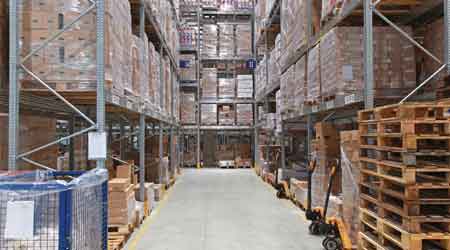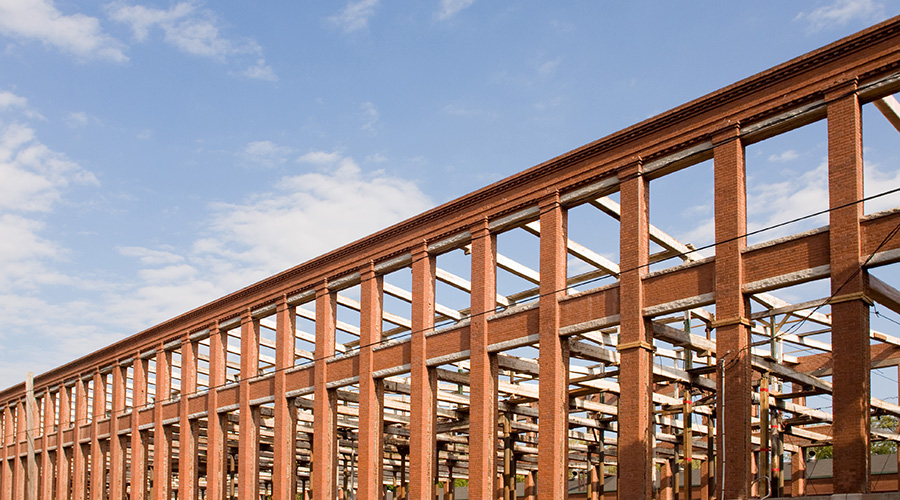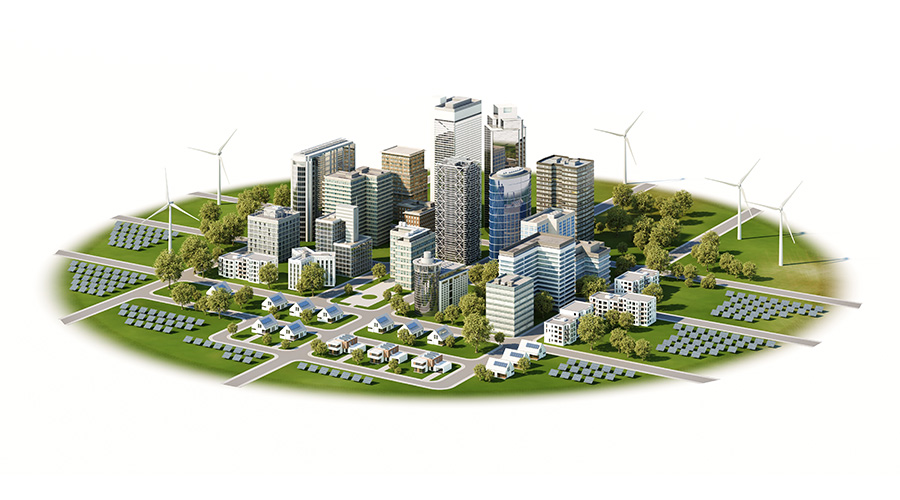Warehouse Cost Segregation Studies Offer Faster Depreciation
Part 1 of a 2-part article about tax opportunities for warehouse construction and renovation
The warehouse industry in the U.S. is experiencing tremendous growth. It is currently estimated to be a $28 billion market with annual growth projections at 3.0 percent. New regulations available for warehouse owners allow great opportunities for reducing the costs of construction and renovations due to cost segregation and incentives for energy efficient equipment. By combining a cost segregation study at the time of purchase or new construction with a plan for taking advantage of future repairs, warehouse owners can significantly reduce the costs of their initial purchase as well as any repairs that need to be addressed during the building’s lifetime.
Large warehouses are springing up in droves to accommodate the growing e-commerce business, which is changing the way warehouses are built. E-commerce retailers need more space than regular wholesalers because they transport a much larger and broader variety of products. The share of retail sales conducted online has been growing steadily since at least 2005 and now accounts for at least 6.7 percent of the total market. Because of the need for more space, ceilings with heights of 40 feet are becoming increasingly common as opposed to the standard 32 feet. The additional eight feet makes just enough room for distributors to build an extra level above the ground floor while still leaving room for light fixtures and fans, which are eligible for immediate expensing.
Cost Segregation
Cost segregation is a method of determining useful life and is offered as guidance by the IRS. Established in 1997, cost segregation leverages years of case law and the Modified Accelerated Cost Recovery System (MACRS), issued by the IRS in 1993. As opposed to normally depreciating all of a warehouse building’s assets over 39 years, these assets are broken up into different “buckets” and depreciated over quicker schedules depending on their function. In most cases, for a building, the ability to depreciate some assets over a quicker schedule can return an average of 5 to 10 percent of the project cost based on the added Net Present Value (NPV) generated. In other words, it is like a 5 to 10 percent cost reduction coupon on the project. The buckets and depreciation schedules that categorize cost segregation are illustrated below:
Table 1: Cost Segregation and Energy Efficiency Incentive Categories' Depreciation Methods
| Category | Depreciation Method | Items Included |
|---|
| Building | 39 Year | Walls, roof, foundation, building lighting, doors, beams, windows, stairways, permanent flooring. |
| Land Improvement | 15 Year | Parking lot, site sewer, paving, curbing, fences, landscaping, non-building related excavation, dumpster pad, exterior light posts. |
| Personal Property | 5 Year | Conveyor systems, air compressors, hydraulic lifts, loading dock levers, loading dock bumpers, walk-in freezers and refrigerators, wall storage units, lockers HVAC, exhaust systems, fire protection, air conditioning, plumbing, emergency lights, electrical distribution systems, electrical wiring and switches |
| Soft Costs | Distributed across all categories | Testing, insurance, permits, blueprints, fees, architectural/engineering, construction labor, general conditions, job site security, etc. |
| Alternative Energy Projects | Typically 5 year | Geothermal, combined heat and power (CHP), wind, solar P.V., etc. |
| EPAct/Section 179D | Up to $1.80/sq.ft. first year accelerated depreciation | Interior lighting, HVAC, building envelope (walls, windows, roof doors) |
1. Building. In a warehouse, the components that make up the physical building are treated as 39-year property. This includes the walls, roof, foundations, windows, stairways, permanent flooring and other long-lasting, permanent, and major components of the building.
2. Land Improvements. Any item or improvement defined as land improvements is categorized as 15 year depreciable equipment. These include the excavation of the site, paving, curbing, fencing, and exterior light posts. Modern warehouses have to maintain corporate image and provide for worker satisfaction. Increasingly, warehouse developers are putting more emphasis on developing landscapes for aesthetic appeal. Tree removal, sod grass, shrubbery, and in ground sprinkler systems are all 15 year depreciable property for warehouse owners.
3. Personal Property. Items that are permanent but not integral to the building’s operation are categorized as 5 year property. For warehouses, these include conveyor systems, air compressors, hydraulic lifts, loading dock levers, loading dock bumpers, walk-in freezers and refrigerators, wall storage units, lockers, HVAC, exhaust systems, fire protection, air conditioning, plumbing, emergency lights, electrical distribution systems, electrical wiring, and switches and other non-permanent similar items.
4. Soft Costs. Costs associated with the construction and planning of the building are distributed proportionally across all class life categories. This includes the construction labor, architectural and engineering costs, blueprints, testing, job site security, insurance, permits, and other fees. When planning a cost segregation study, the impact of depreciating soft costs must not be overlooked. With increasing urbanization, costs for permits and associated fees are rising. A cost segregation study can help reduce the strain of these increasing construction-related fees.
Cost Segregation Repair Regulations
In October 2013, the IRS issued new permanent regulations (TD 9636) for the treatment of capital and repair related purchases. When performing a cost segregation study, the properties allocated into depreciation buckets must be segregated into building systems, describing the role they serve in the building. These categories are as follows:
• HVAC
• Plumbing
• Electrical
• Escalators
• Elevators
• Fire Protection & Alarms
• Security Systems
• Gas Distribution
• All Other
When faced with a future one-for-one replacement of building system equipment, buildings that have conducted a cost segregation down to the building system level may be able to expense the basis of the new equipment. The replacement must not be a betterment and must replace less than 50 percent of that type of similar functioning building system equipment. For example, a facility conditioned with 10 package HVAC units can replace up to 4 with similar equipment and expense the cost of the replacement, thereby reducing the after tax cost of the replacement. In the scenario where the new equipment must be capitalized, the taxpayer may be able to write off the remaining cost basis of the old assets, so long as they have identified the single cost of these assets.
Related Topics:













